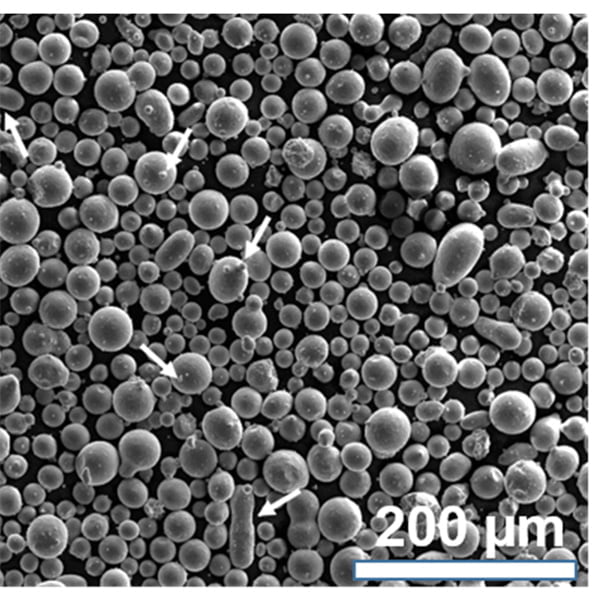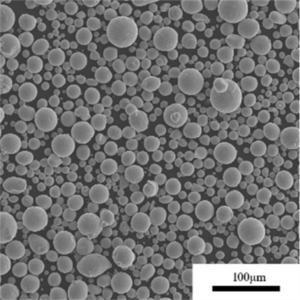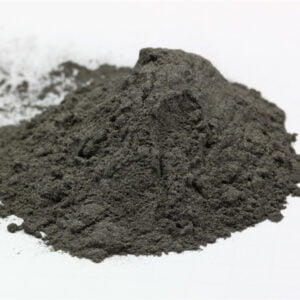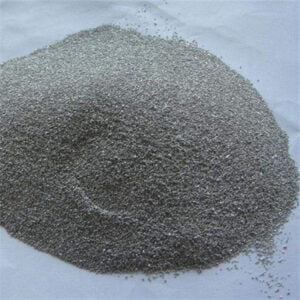H13 legerat stålpulver för 3D-utskrift
Vårt kväveatomiserade H13-legerade stålpulver har god härdbarhet, termisk hållfasthet, slitstyrka och hög slaghållfasthet, termisk utmattning, som ofta används vid tillverkning av heta arbetsformar. Slitage är en av de viktigaste felsätten för H13-stålets hetbearbetningsform. Att förbättra H13-stålets slitstyrka på ytan är ett effektivt sätt att förbättra formens livslängd.
Låg MOQ
Tillhandahålla låg minsta orderkvantitet för att möta olika behov.
OEM & ODM
Tillhandahålla kundanpassade produkter och designtjänster för att tillgodose unika kundbehov.
Tillräckligt lager
Säkerställa snabb orderhantering och tillhandahålla tillförlitlig och effektiv service.
Kundtillfredsställelse
Tillhandahålla högkvalitativa produkter med kundnöjdhet i fokus.
dela denna produkt
Innehållsförteckning
H13 legerat stålpulver är ett mycket mångsidigt och välanvänt material i olika industriella tillämpningar, särskilt inom additiv tillverkning (AM) av metall. Detta krom-molybdenverktygsstål för varmbearbetning är känt för sina exceptionella egenskaper, såsom hög hårdhet, utmärkt slitstyrka och god seghet, även vid förhöjda temperaturer.
| Sammansättning | Innehåll (%) |
|---|---|
| Kol | 0.32 – 0.45 |
| Krom | 4.75 – 5.50 |
| Molybden | 1.10 – 1.75 |
| Vanadin | 0.80 – 1.20 |
| Kisel | 0.80 – 1.20 |
| Mangan | 0.20 – 0.50 |
| Järn | Balans |
Typisk kemisk sammansättning för pulver av legerat stål H13
Egenskaper och kännetecken
| Fastighet | Värde |
|---|---|
| Täthet | 7,8 g/cm³ |
| Hårdhet (glödgad) | 185 - 235 HB |
| Hårdhet (värmebehandlad) | 48 - 52 HRC |
| Draghållfasthet (värmebehandlad) | 1800 - 2100 MPa |
| Utbyteshållfasthet (värmebehandlad) | 1500 - 1800 MPa |
| Töjning (värmebehandlad) | 10 – 15% |
| Termisk konduktivitet | 28,6 W/m-K vid 20°C |
| Smältpunkt | 1427 - 1510°C |
Typiska egenskaper för legerat stål H13
H13 legerat stålpulver uppvisar utmärkt dimensionsstabilitet, krypbeständighet och termisk utmattningsbeständighet, vilket gör det till ett idealiskt val för olika industriella applikationer. Dess höga hårdhet och slitstyrka gör det lämpligt för tillverkning av verktyg, formar och komponenter som utsätts för svåra mekaniska och termiska påfrestningar.
Tillämpningar
| Tillämpning | Beskrivning |
|---|---|
| Strängsprutningsverktyg | Används för varmsträngsprutning av metaller, plast och andra material |
| Smidesverktyg | Används i varmsmidningsprocesser för olika metallkomponenter |
| Formsprutningsverktyg | Anställd inom formsprutning av plast för tillverkning av plastdetaljer |
| Skärblad för heta saxar | Används vid varmklippning för att skära metaller vid förhöjda temperaturer |
| Gjutning Verktyg | Används vid tillverkning av gjutgods för olika industrier |
| Verktyg för pulvermetallurgi | Används vid tillverkning av komponenter i pulvermetallurgi |
| Komponenter för additiv tillverkning (AM) | Används för att tillverka högpresterande komponenter med 3D-printingteknik i metall |
Vanliga användningsområden för pulver av legerat stål H13
Specifikationer, storlekar och kvaliteter
| Specifikation | Beskrivning |
|---|---|
| ASTM A681 | Standardspecifikation för verktygsstål, legerade |
| DIN 1.2344 | Tysk standard för verktygsstål för varmbearbetning |
| JIS SKD61 | Japansk industristandard för varmbearbetningsstål |
| BS BH13 | Brittisk standard för varmbearbetningsstål för matriser |
| AISI H13 | American Iron and Steel Institute-specifikation för varmbearbetat formstål |
Vanliga specifikationer och standarder för legerat stål H13
Pulver av legerat stål H13 finns vanligtvis i olika partikelstorleksfördelningar, från grovt till fint pulver, för att uppfylla kraven i olika additiva tillverkningsprocesser, t.ex. laserpulverbäddfusion (LPBF), elektronstrålepulverbäddfusion (EBPBF) och bindemedelsjetting.
Leverantörer och prissättning
Met3DP tillverkar ett brett sortiment av högkvalitativa metallpulver som är optimerade för laser- och elektronstrålepulverbäddsfusion. I portföljen ingår innovativa legeringar som TiNi, TiTa, TiAl, TiNbZr, CoCrMo, rostfritt stål, superlegeringar med mera.
Priset på H13 legerat stålpulver kan variera beroende på flera faktorer, inklusive leverantör, kvantitet, partikelstorleksfördelning och kvalitetsspecifikationer. Generellt varierar kostnaden från 50to150 per kilogram, där finare pulver och specialkvaliteter vanligtvis är dyrare.
Vanliga frågor
F1: Vad gör H13 legerat stålpulver lämpligt för additiv tillverkning? A1: Det legerade stålpulvret H13:s utmärkta mekaniska egenskaper, värmebeständighet och dimensionsstabilitet gör det till ett idealiskt material för tillverkning av högpresterande komponenter med additiva tillverkningsprocesser som laserpulverbäddfusion och elektronstrålepulverbäddfusion.
F2: Kan H13 legerat stålpulver användas för andra tillverkningsprocesser än additiv tillverkning? A2: Ja, H13 legerat stålpulver kan också användas i konventionella tillverkningsprocesser som pulvermetallurgi, het isostatisk pressning (HIP) och formsprutning av metall (MIM).
F3: Vilka är de typiska efterbearbetningsstegen för komponenter tillverkade av pulver av legerat stål H13? A3: Vanliga efterbehandlingssteg för komponenter i legerat H13-stål är värmebehandling, het isostatisk pressning (HIP), maskinbearbetning och ytbehandling som slipning, polering eller beläggning.
Fråga 4: Hur påverkar partikelstorleksfördelningen hos pulver av legerat stål H13 dess prestanda vid additiv tillverkning? A4: Partikelstorleksfördelningen spelar en avgörande roll för pulverets flytbarhet, packningstäthet och bearbetbarhet vid additiv tillverkning. Finare pulver ger i allmänhet bättre upplösning och ytfinish, medan grövre pulver kan uppvisa bättre mekaniska egenskaper.
F5: Finns det några särskilda säkerhetsåtgärder att beakta vid hantering av H13 legerat stålpulver? A5: Ja, lämpliga säkerhetsåtgärder bör vidtas vid hantering av H13 legerat stålpulver, inklusive användning av personlig skyddsutrustning (PPE), tillräcklig ventilation och korrekt bortskaffande av avfallsmaterial. Dessutom bör försiktighetsåtgärder vidtas för att förhindra statisk urladdning och dammexplosioner.
Få det senaste priset
Om Met3DP
Produktkategori
HOT SALE
KONTAKTA OSS
Har du några frågor? Skicka oss meddelande nu! Vi kommer att betjäna din begäran med ett helt team efter att ha fått ditt meddelande.
Relaterade produkter

Metallpulver för 3D-printing och additiv tillverkning
FÖRETAG
PRODUKT
cONTACT INFO
- Qingdao City, Shandong, Kina
- [email protected]
- [email protected]
- +86 19116340731













